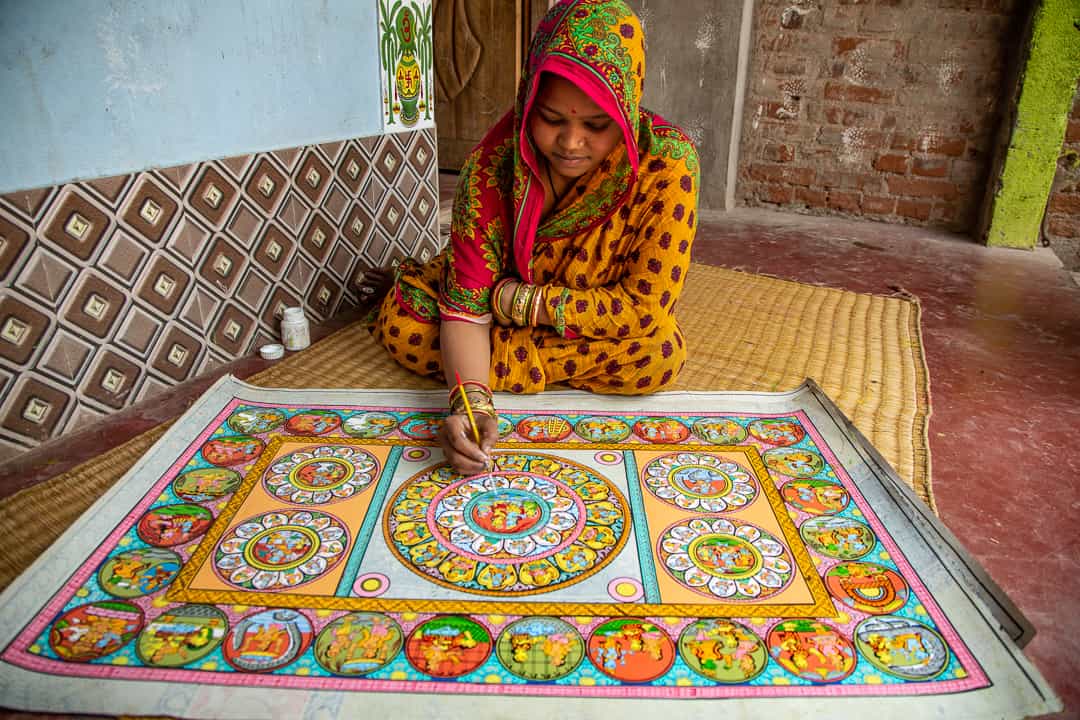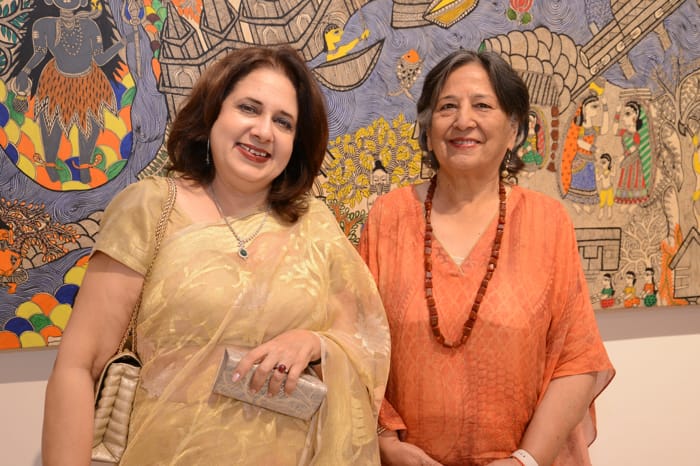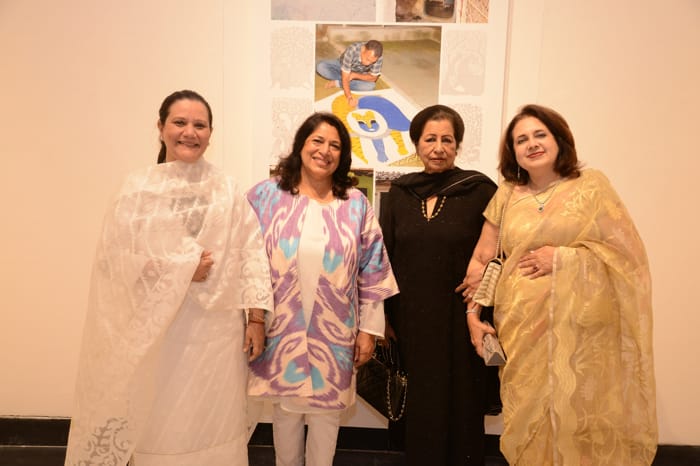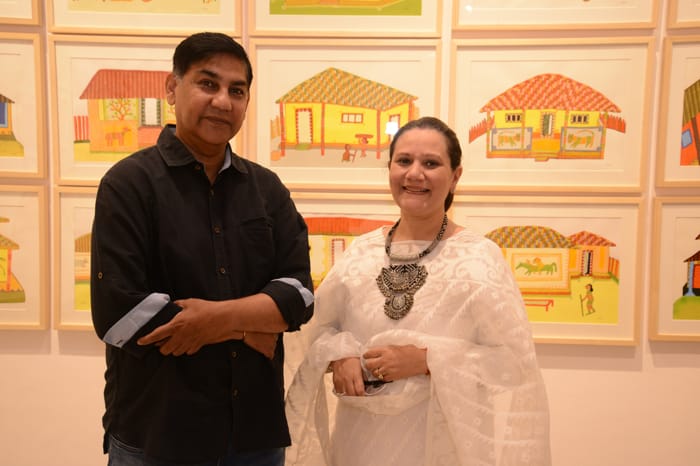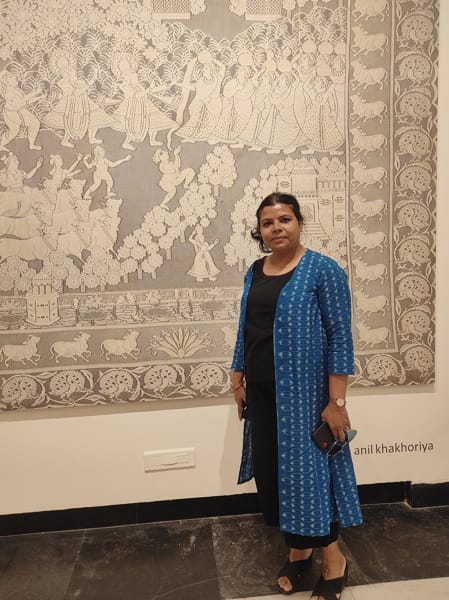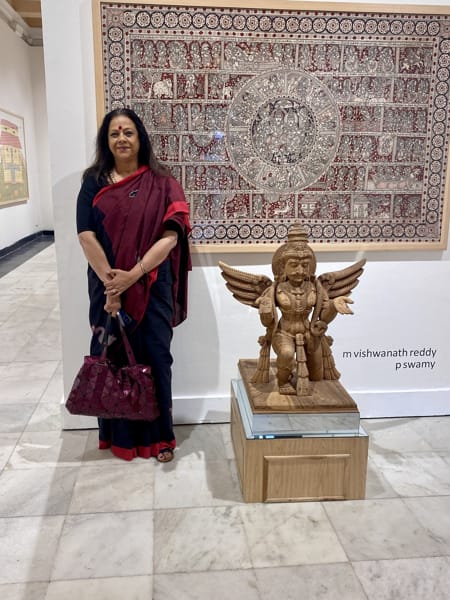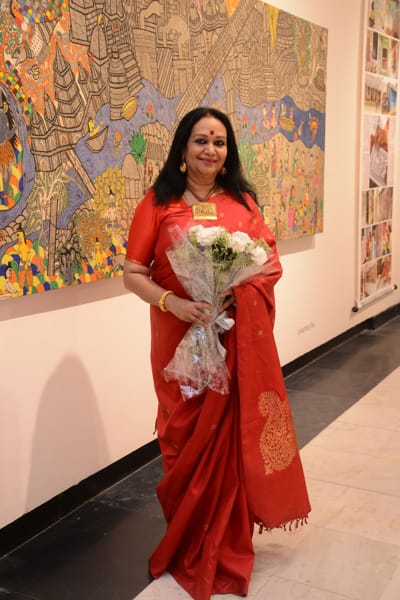Conversations in my own language… highlights the contemporary practices of indigenous art in the country. The practices involved in creating these works are rooted in longstanding traditions. Many of these evolve from different practices to decorate one’s shrines, homes or even clothes.
These works depict religion, folklore and the evolution of the artist’s environment. Their contemporary observations and individual touch highlight the need (the endeavour of the gallery) to recognise not just a ‘style’ /type of art but individual artists as done in other contemporary contexts.
It’s taken us years to decolonise our mind and are hence fearless to express in our own language and thrive in the comfort we derive by a sense of familiarity, it’s an aesthetic reclamation in its own right– of the artist and the viewer. It’s been a long journey of trying to identify ourselves, we are indebted to these artists who have been custodians of our glorious traditional and tribal arts.
Gond art evolved from Bhitti Chitra (wall murals) and Digna (floor patterns) put to paper and canvas. In his new series Dhavat Singh depicts the traditional homes of his village documenting the origin of the art he practices. As the community evolves, the homes seek the more practical pakka homes now available to them and Dhavat fears this traditional house will be entirely lost in the process.
A Kumar Jha follows the line drawing Mithila style of Madhubani with the traditional methods. However, his individual aesthetic stands out in his use of colour in a series of yellow-white and red-white depictions of goddesses, and his depictions of the various banks of the rivers Ganga and Yamuna.
Anil Khakhoriya practices the traditional method of embroidery on fabric to create an eclectic texture on the Pichwai. He works on different mediums and he has recreated the woven Net Pichwai’s from the late eighteen hundreds.
Manish Soni is driven by his love for his hometown, Nathdwara. He endeavors to uphold his family tradition of painting Pichwai’s for the ancient Shreenath Temple. He paints traditional subjects of the region.
Mahendra Singh along with his son Karan Mohan Singh have been custodians of the Pichwai art as their family dwells in this tradition for over two centuries. Recognised as being the family in the forefront of the Pichwai art, Karan brings on the table subjects that have been buried in history. His Jain Pichwai’s bring out the Jain movement in Gujarat and Rajasthan.
M Vishwanath Reddy is committed to save the ancient art form of Kalamkari set in the beauteous temple town Srikalahasti. The artist paints with natural dyes on hand spun cotton fabric, a tradition passed on over centuries. Motifs drawn in Kalamkari spans from flowers, peacock, paisleys to divine characters of Hindu epics like Mahabharata and Ramayana. The process of creating a Kalamkari painting involves 23 steps, at first the motifs are drawn using a Kalam (pen) and then colour is filled in with detailed precision.
Srinivas Rao hails from the town of Machilipatnam in Andhra Pradesh. His family have been custodians of Kalamkari art for centuries. He specializes in carving out his own woodcut blocks for his art. Srinivas has been awarded the state award in the year 1996.
Prakash Chandra hails from the artist village of Kapoteswar in Odisha. He practices the ancient art of Pattachitra. His detailed pen work and his beautiful paintings derive from the traditional Rath Yatra at the Jagannath temple. His work also reflects the prevalent contemporary culture around him.
P Swamy was born in 1968. He hails from the temple town of Chidambram. These sculptures are carved out of single wood blocks intricately done by Swamy’s family over centuries. The temple sculptures origin dates back to before the Chola period and were highly patronised by the Chola dynasty. The essence of this art form remains deeply rooted in tradition.
Photography of the dwellings and the environment of the artists has been captured by Shoba Jolly. I personally along with artist photographer have made these trips to the heart of these states to give this idea the light of the day. She has been able to put a pulse on these extraordinary aesthetics.
The artists are all living and practicing in their hometowns and are quietly doing a great service to the community and our indigenous arts.
-Nidhi Jyoti Jain
Dhavat Singh
M Vishwanath Reddy
A Kumar Jha
P Swamy
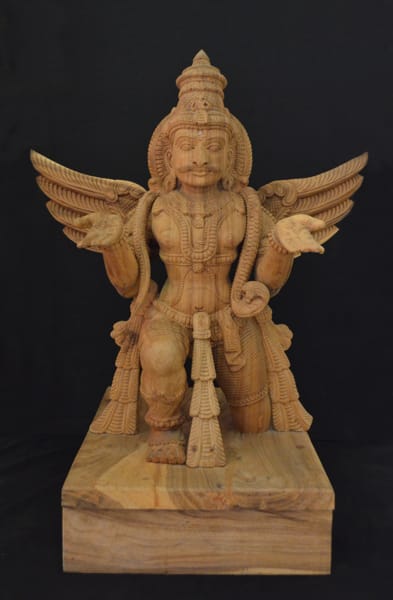
P Swamy, Garuda, Temple Wooden Sculpture, 30x30x20 Inches
Prakash Chandra
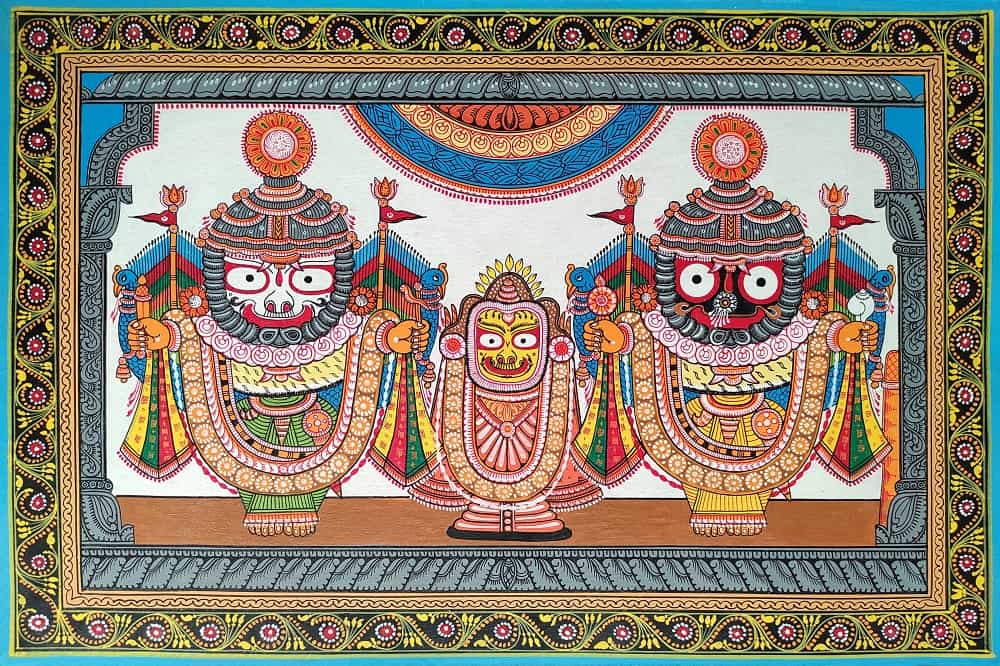
Prakash Chandra,Untitled,Organic colours on Paper,12×18 inches
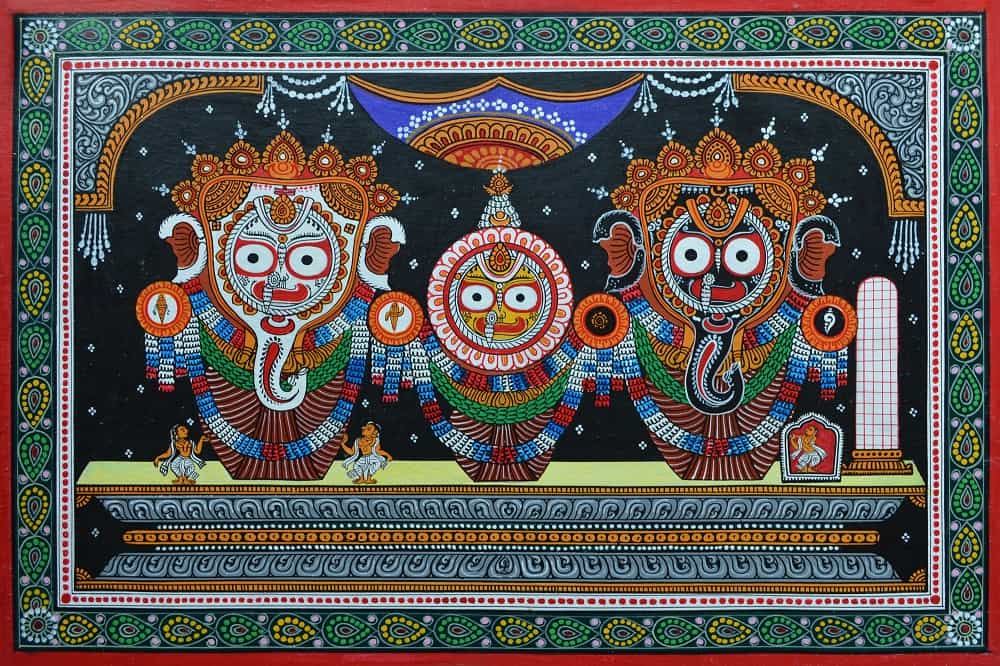
Prakash Chandra,Untitled,Organic Colours on Paper,12×18 inches
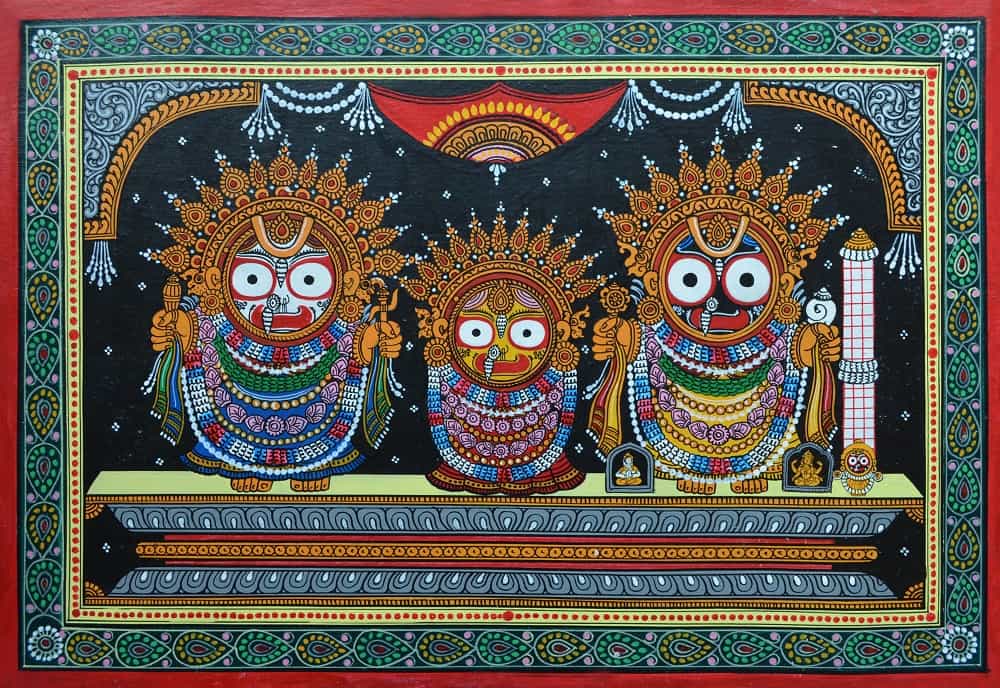
Prakash Chandra,Untitled,Organic Colours on Paper,12×18 inches

Prakash Chandra,Untitled,Organic colours on Paper,12×18 inches
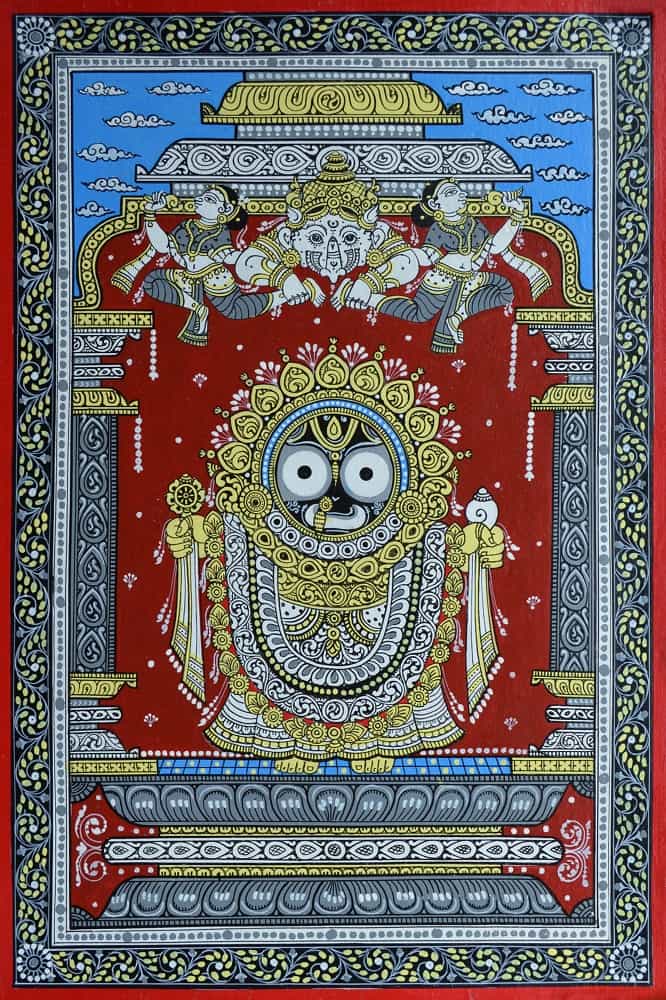
Prakash Chandra,Untitled,Organic colours on Paper,18×12 inches
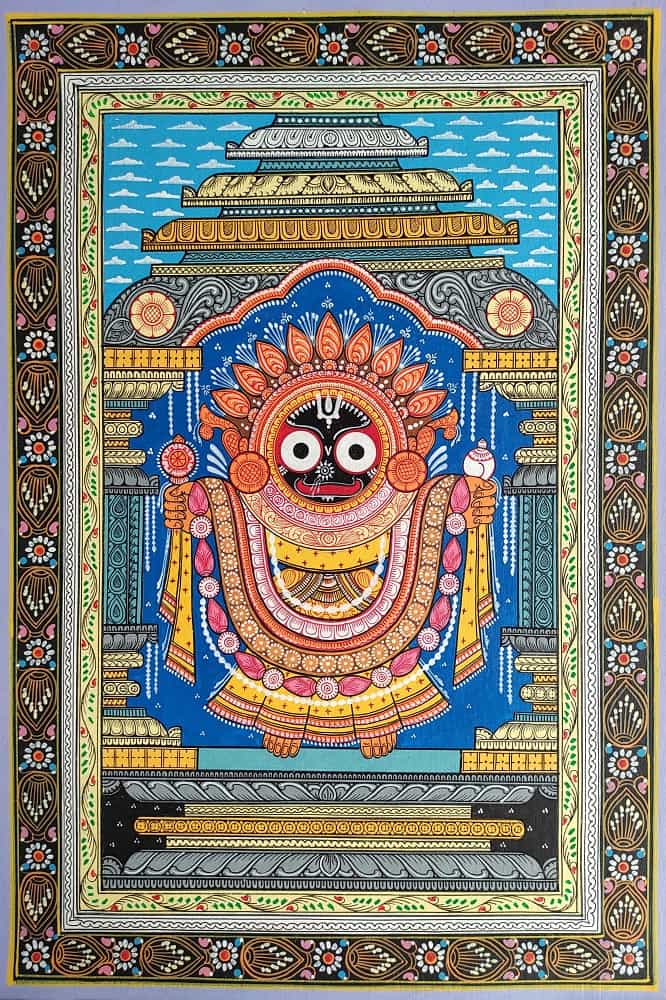
Prakash Chandra,Untitled,Organic colours on Paper,18×12 inches
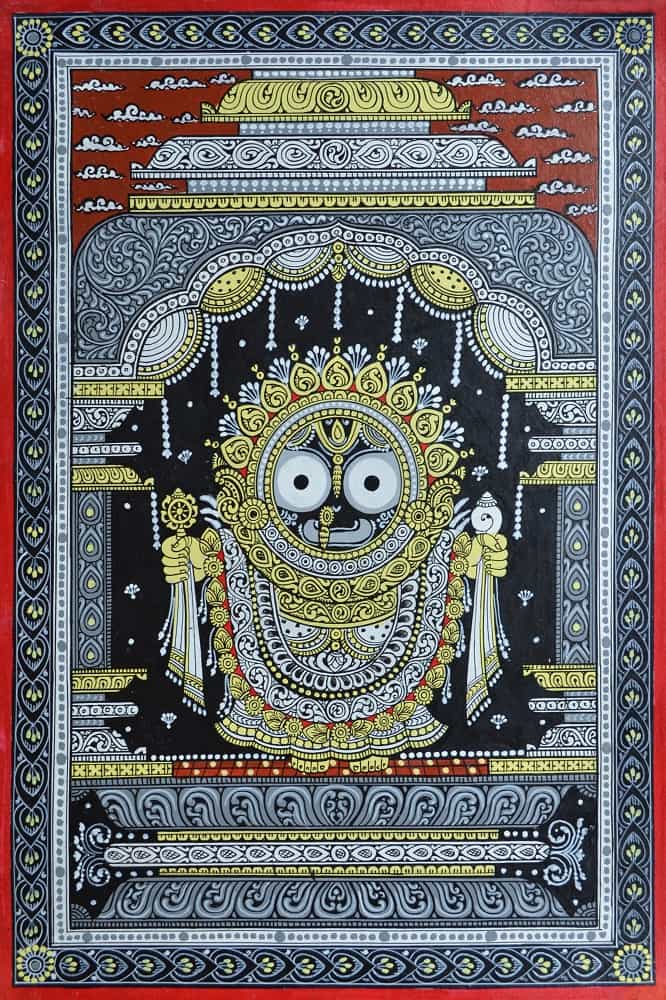
Prakash Chandra,Untitled,Organic Colours on Paper,18×12 inches
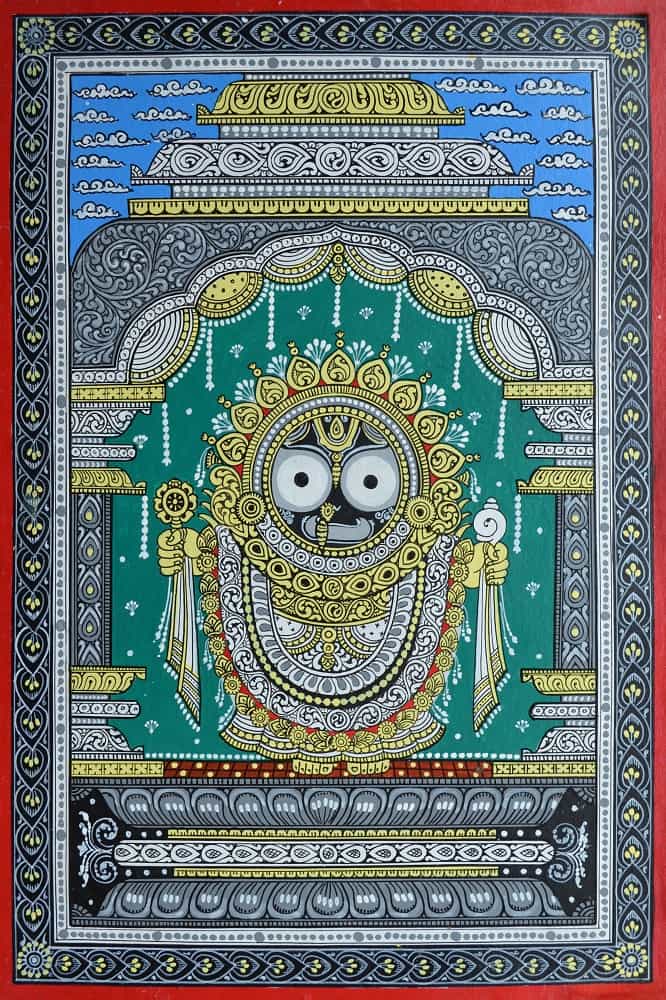
Prakash Chandra,Untitled,Organic Colours on Paper,18×12 inches

Prakash Chandra,Untitled,Organic colours on Paper,18×12 inches
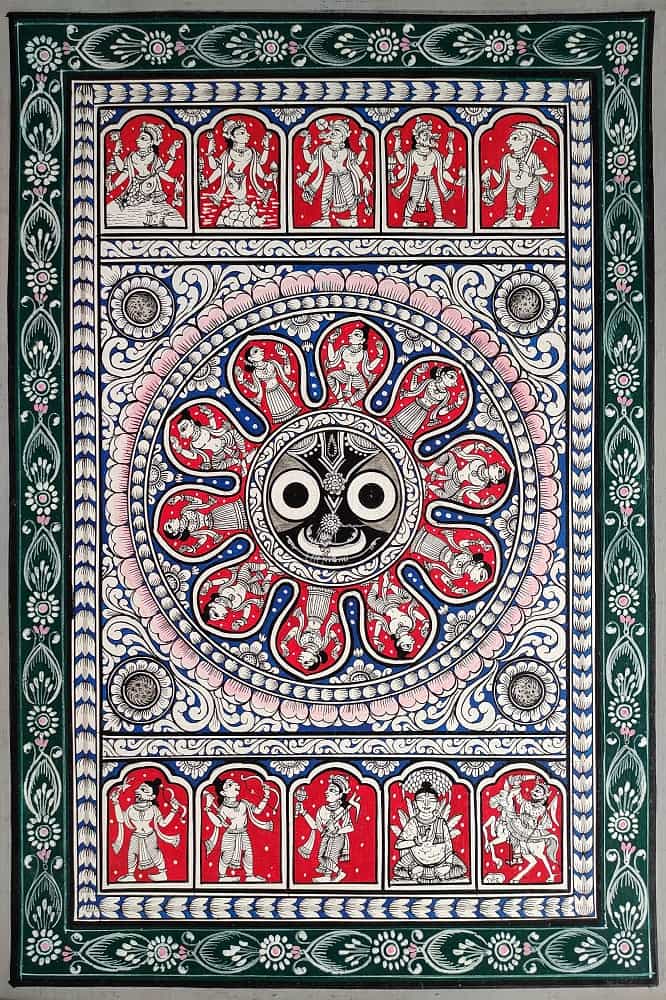
Prakash Chandra,Untitled,Organic colours on Paper,18×12 inches
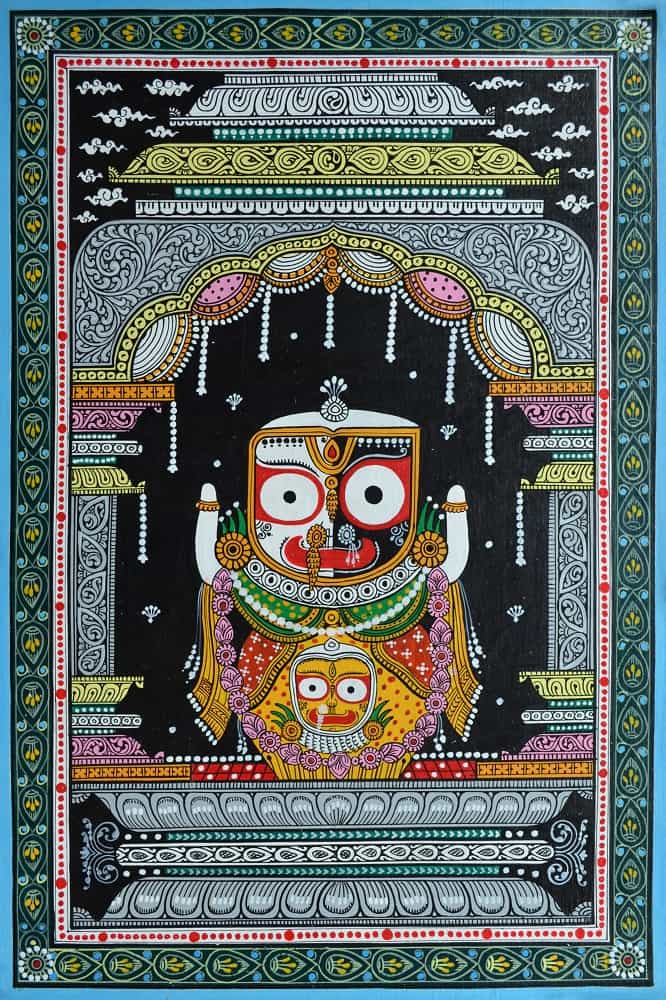
Prakash Chandra,Untitled,Organic Colours on Paper,18×12 inches
K.M. Singh
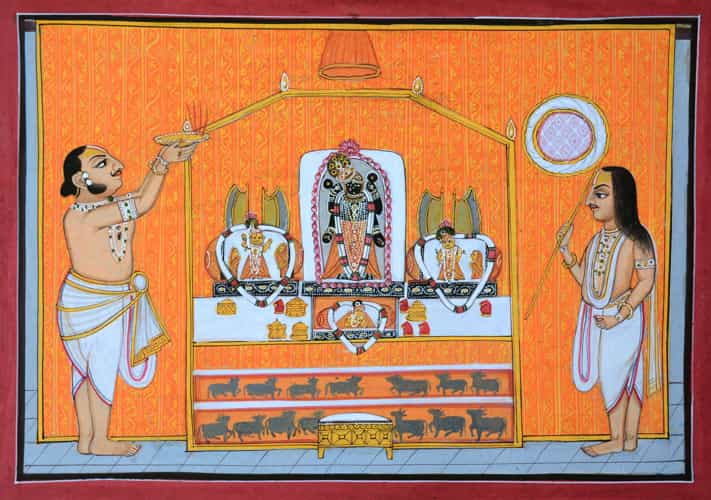
K.M. Singh,Untitled,Organic Stone Colours on Paper,8×12 Inches
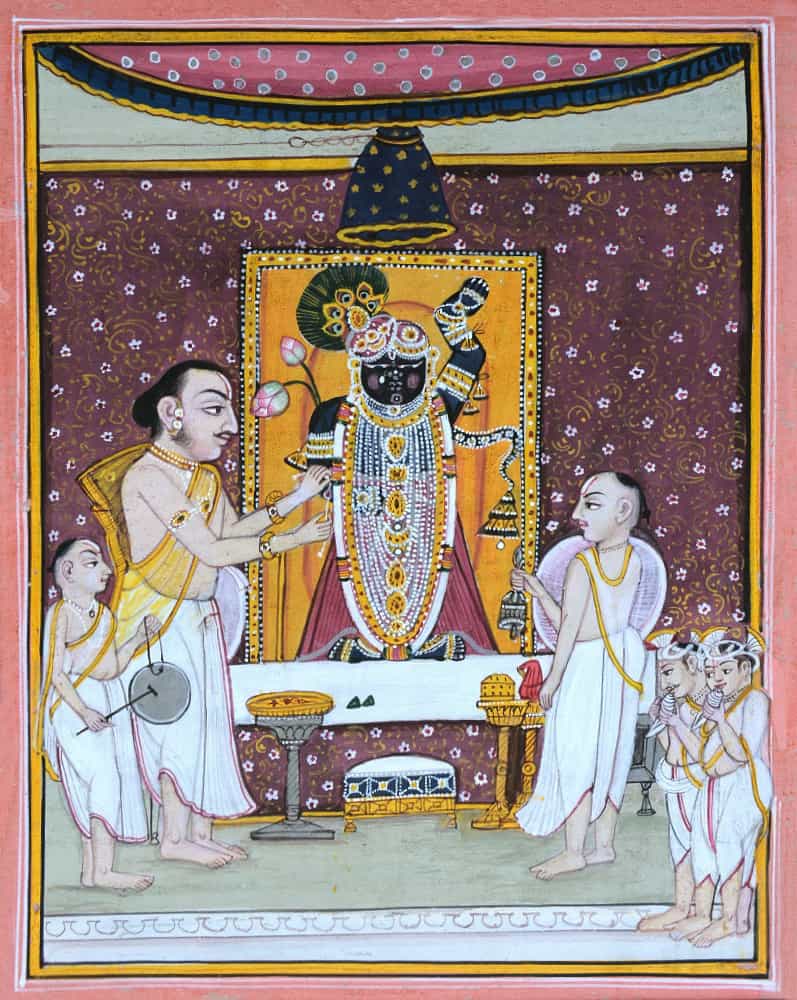
K.M. Singh,Untitled,Organic Stone Colours on Paper,10×8 Inches

K.M. Singh,Untitled,Organic,Stone Colours on Paper,10×8 Inches
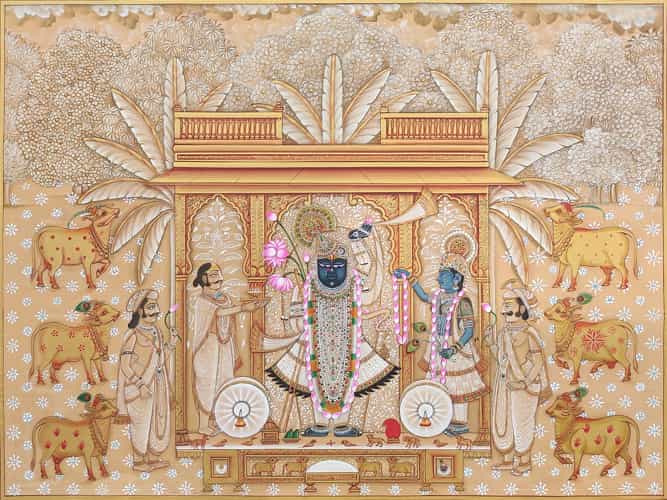
K.M. Singh,Untitled,Gold Leaf Organic Paint on Fabric,36×48 Inches

K.M. Singh,Untitled,Gold Leaf Organic Paint on Fabric,67×47 inches
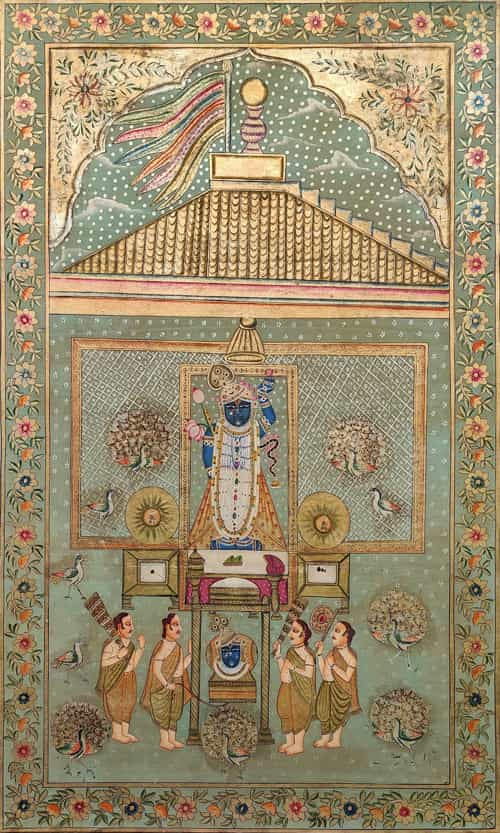
K.M. Singh,Untitled,Gold Leaf Organic Paint on Fabric,60×36 Inches
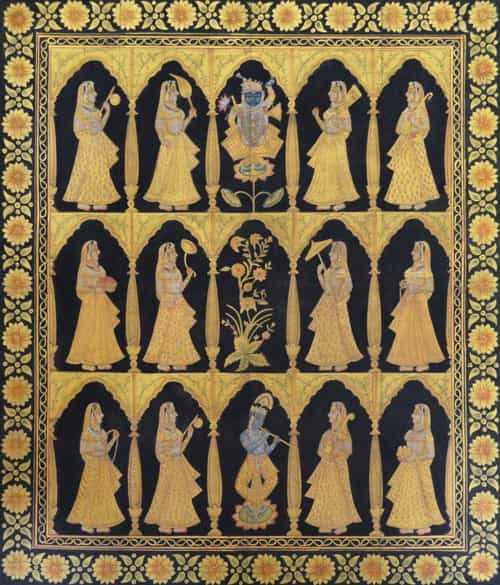
K.M. Singh,Untitled,Gold Leaf Organic Paint on Fabric,56×48 Inches
Manish Soni
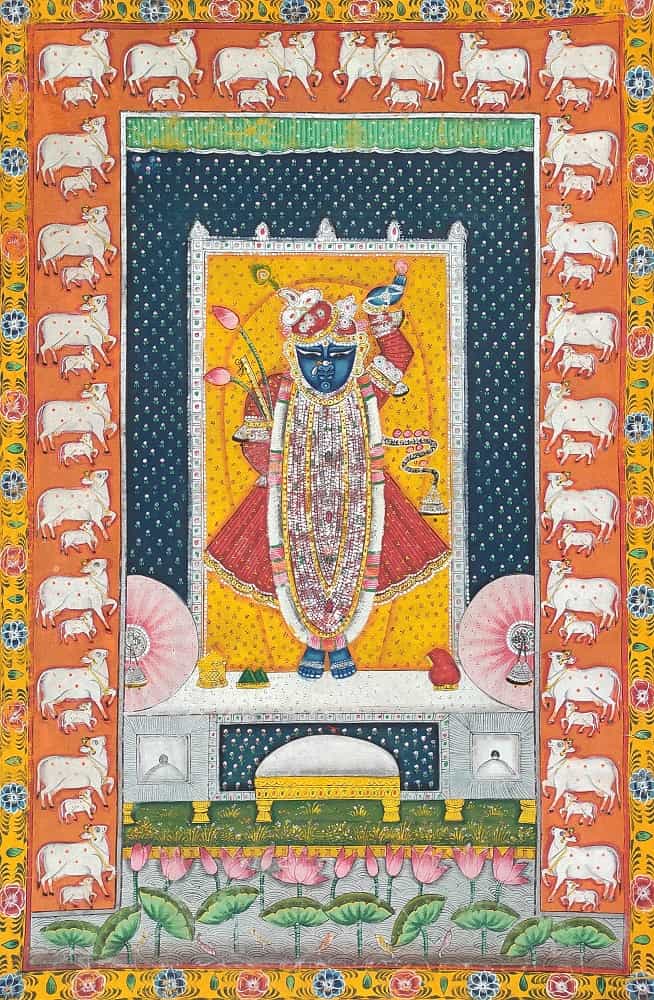
Manish Soni,Untitled,Organic,Paint on Cotton Fabric,34×22 Inches
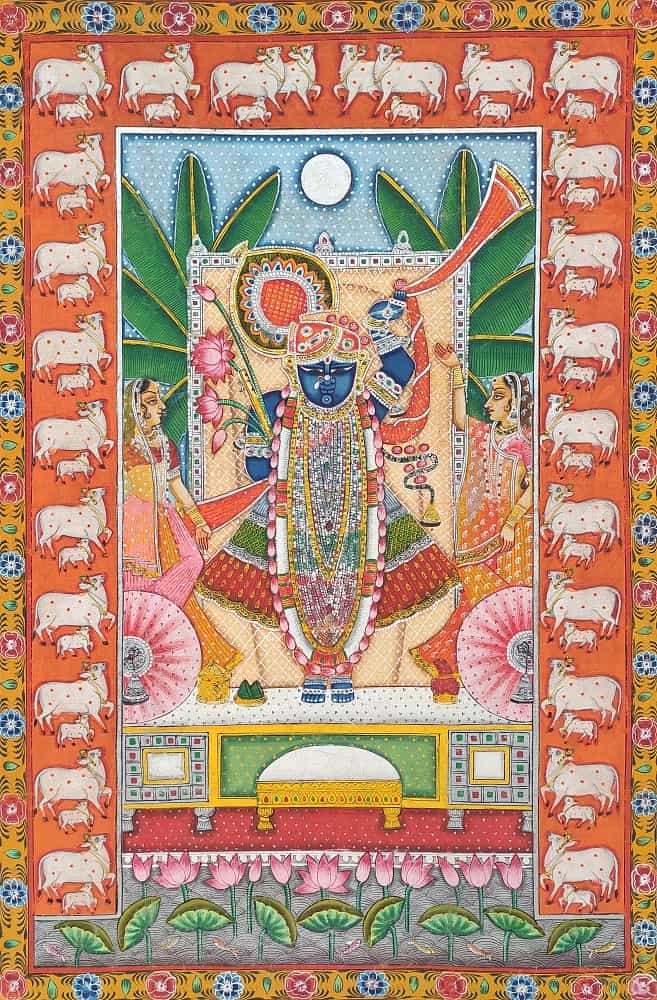
Manish Soni,Untitled,Organic Paint on Cotton Fabric,34×22 inches
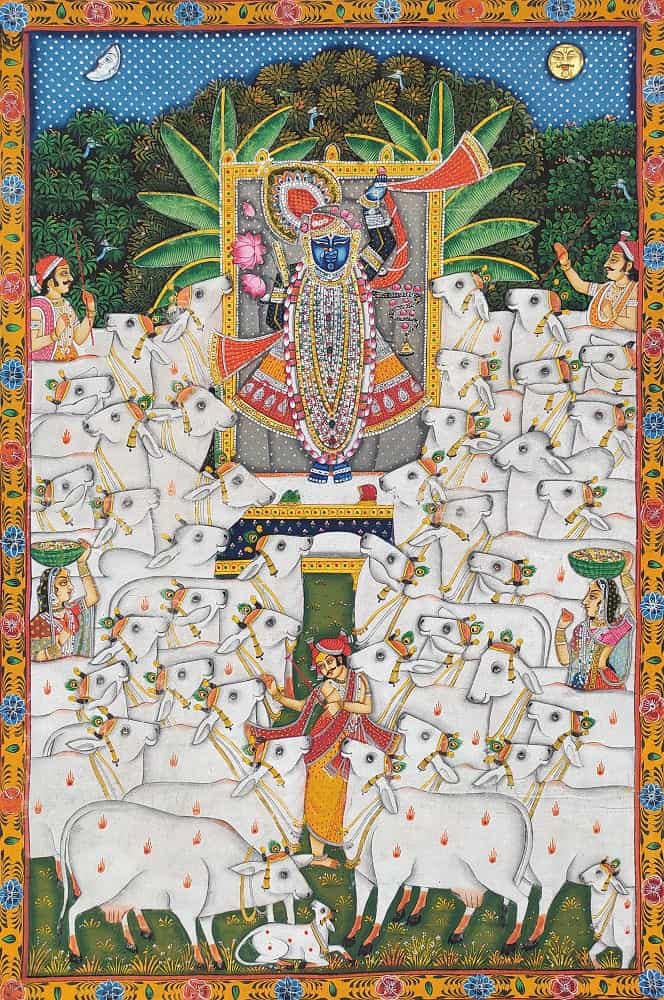
Manish Soni,Untitled Organic Paint on Cotton Fabric,35×24 inches
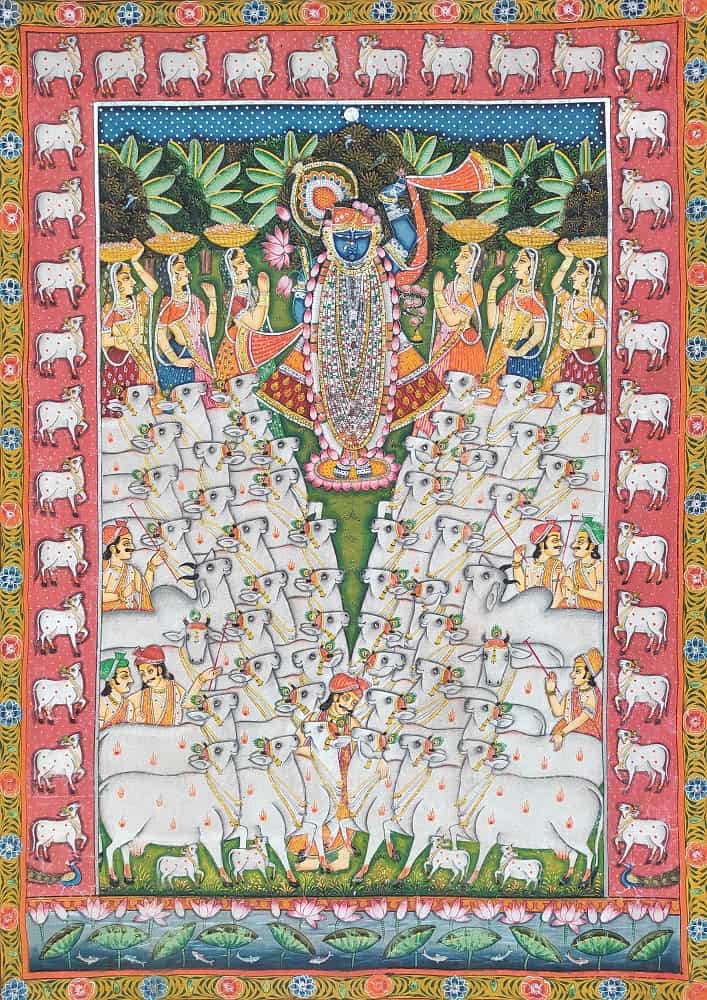
Manish Soni,Untitled,Organic Paint on Cotton Fabric,36×26 inches

Manish Soni,Untitled,Organic Paint on Cotton Fabric,53×72 Inches
Anil Khakhoriya
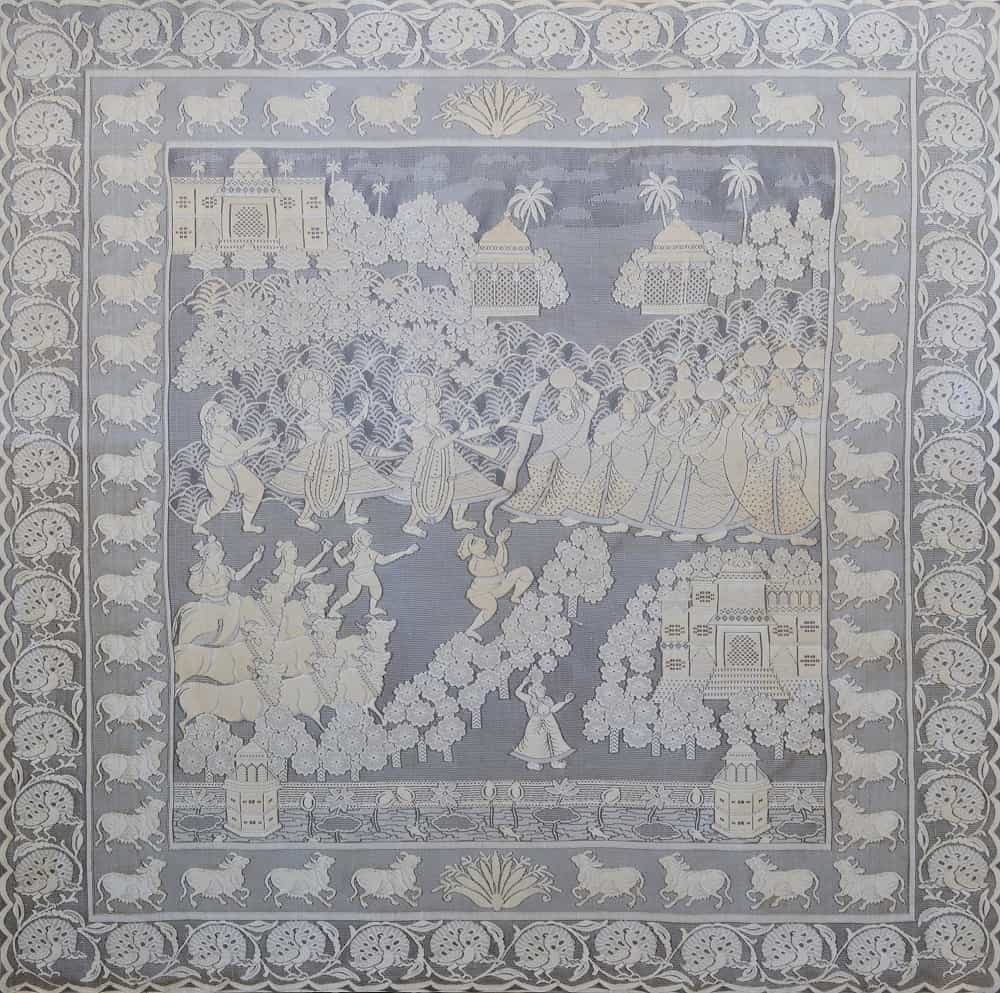
Anil Khakhoriya,Untitled,Woven Net Pichwai,102×102 Inches
Shoba Jolly
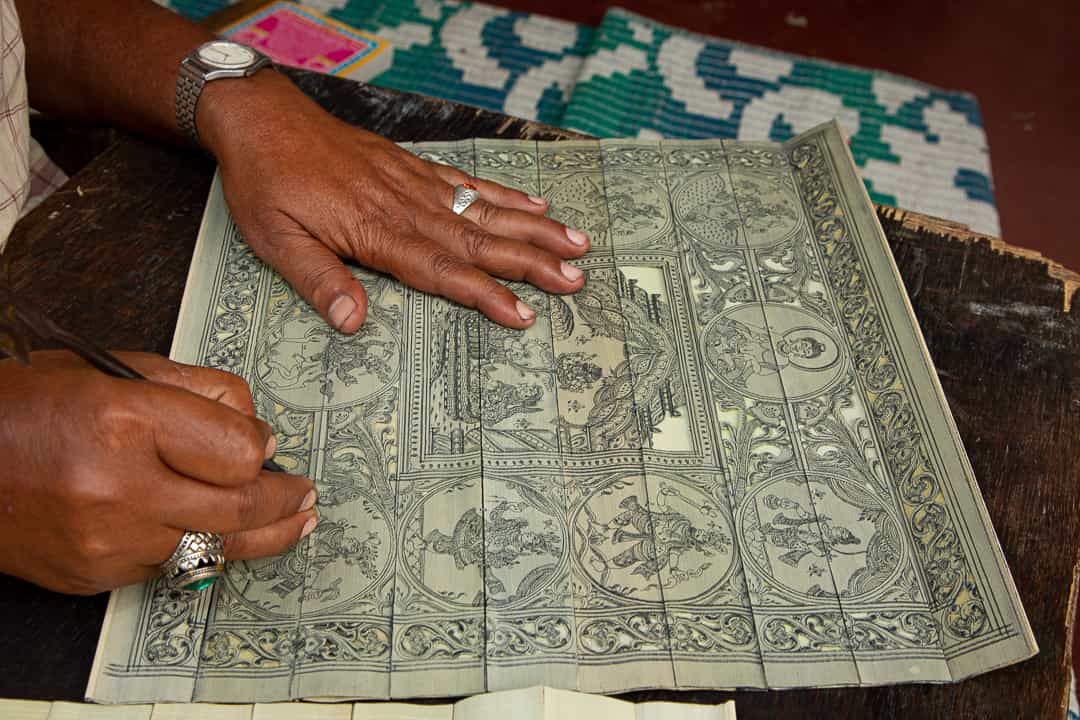
Shoba Jolly, Pattachitra Villages, Archival Print on Paper, 12×18 Inches
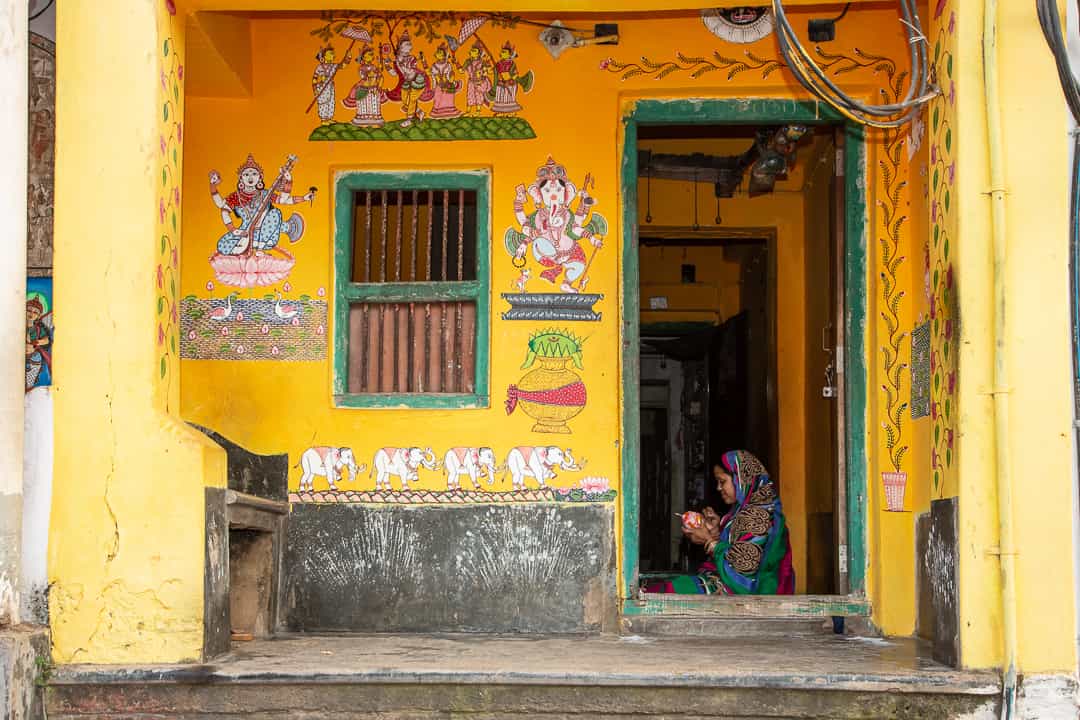
Shoba Jolly, Pattachitra Villages, Archival Print on Paper, 12×18 Inches

Shoba Jolly, Pattachitra Villages, Archival Print on Paper, 12×18 Inches
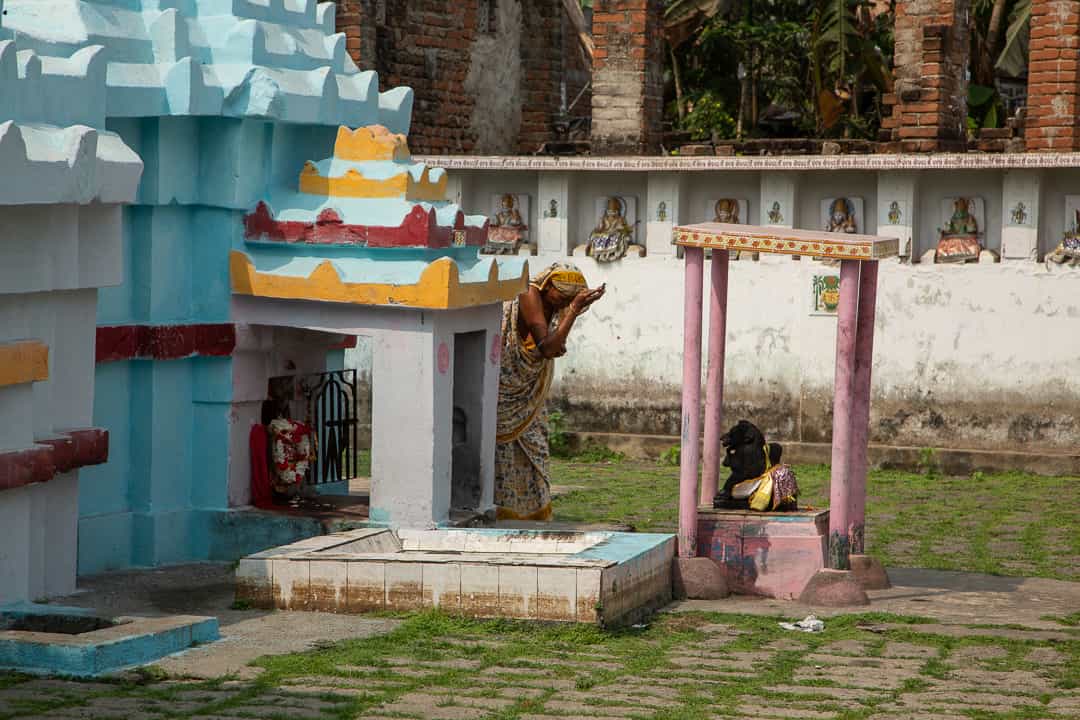
Shoba Jolly, Pattachitra Villages, Archival Print on Paper, 12×18 Inches
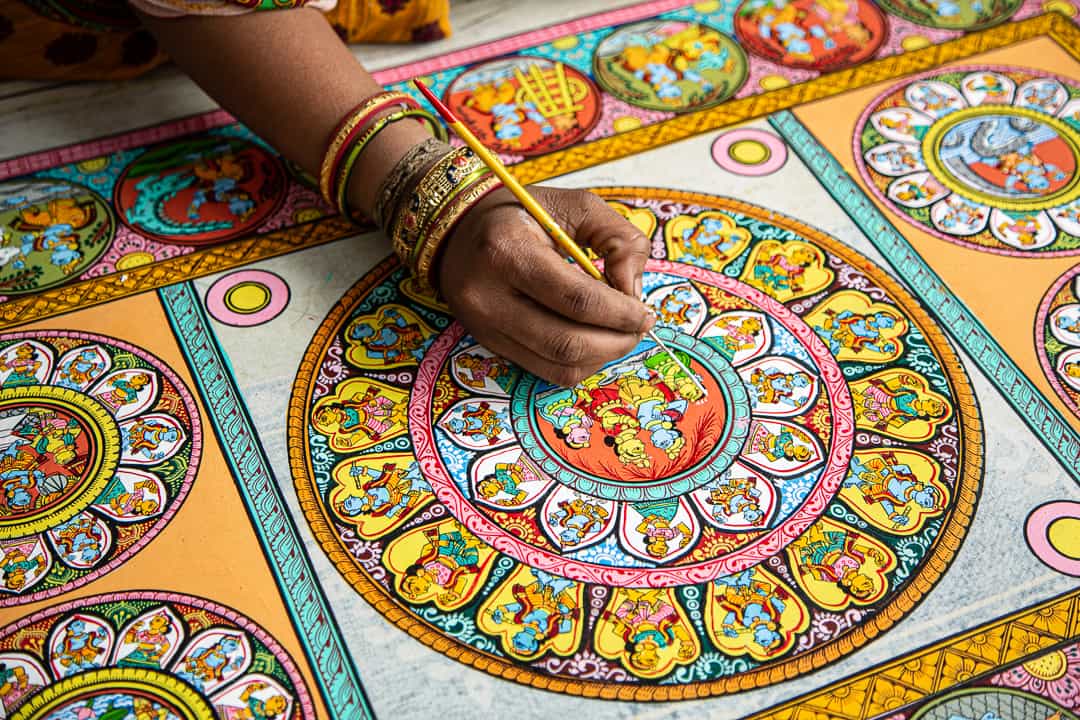
Shoba Jolly, Pattachitra Villages, Archival Print on Paper, 12×18 Inches
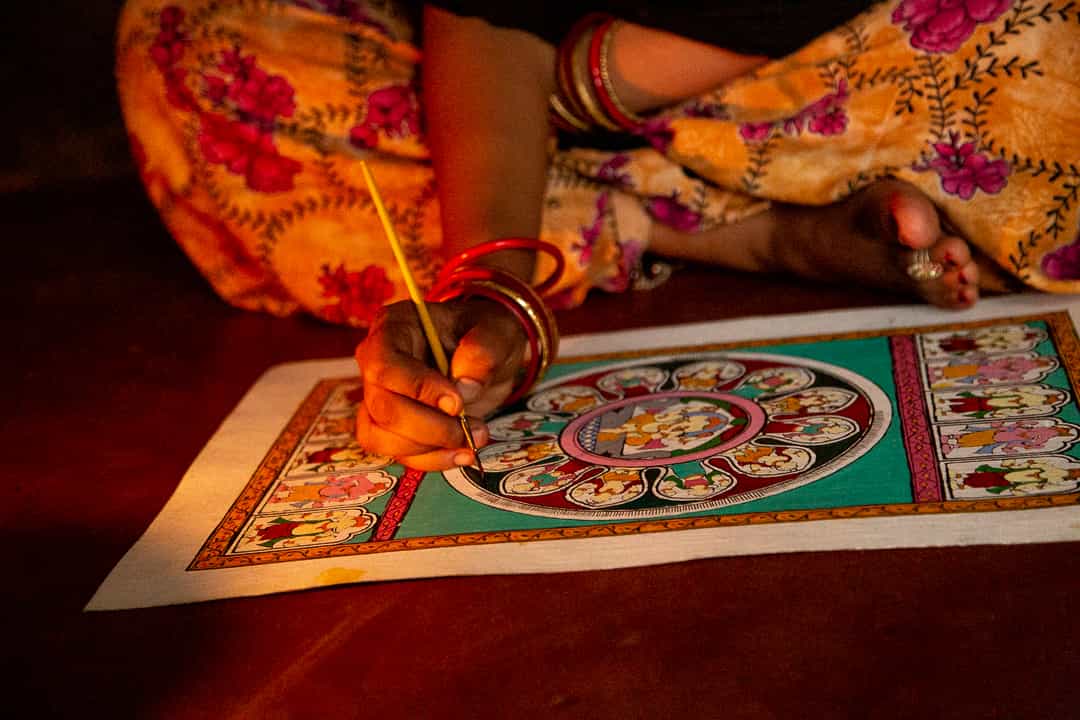
Shoba Jolly, Pattachitra Villages, Archival Print on Paper, 12×18 Inches
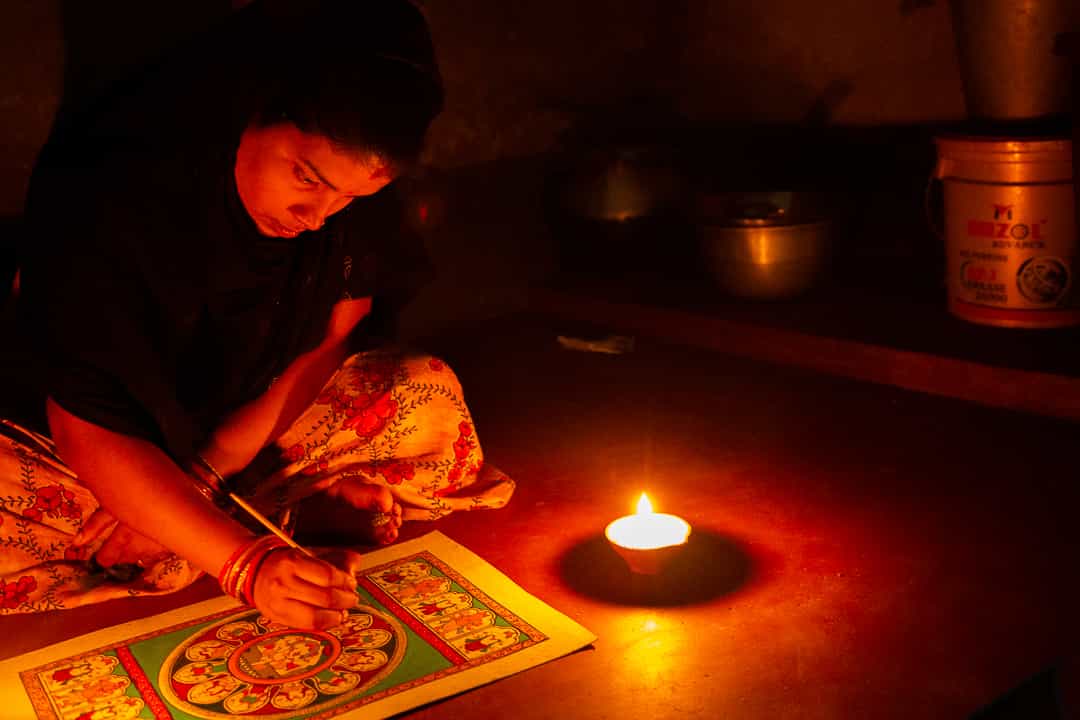
Shoba Jolly, Pattachitra Villages, Archival Print on Paper, 12×18 Inches
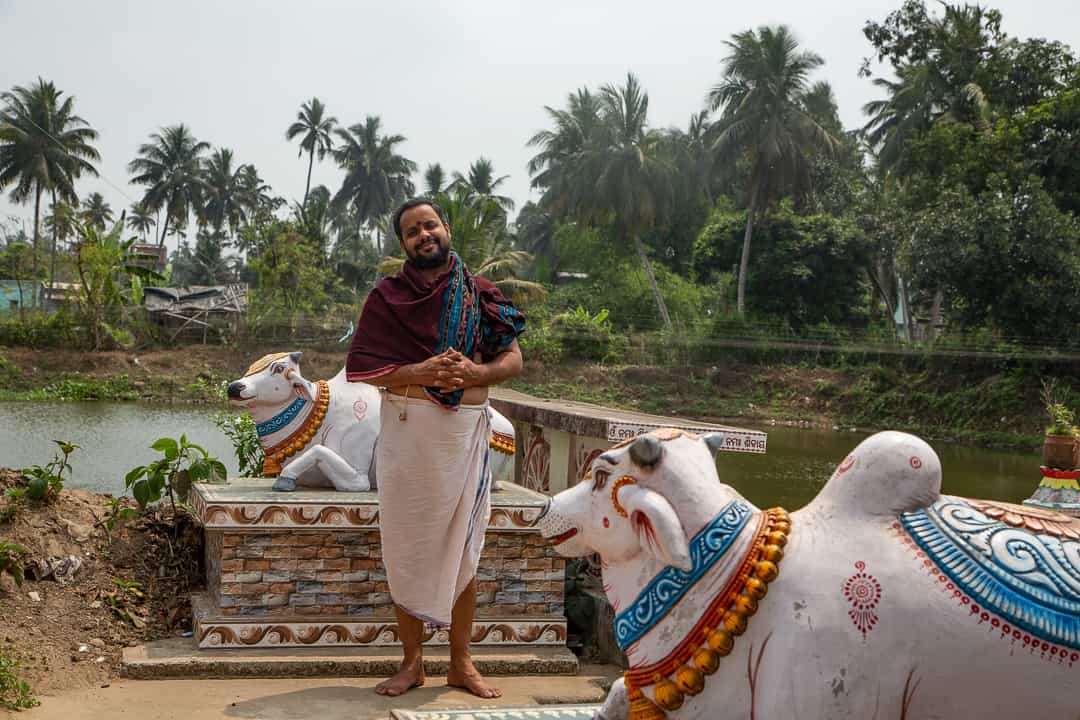
Shoba Jolly, Pattachitra Villages, Archival Print on Paper, 12×18 Inches
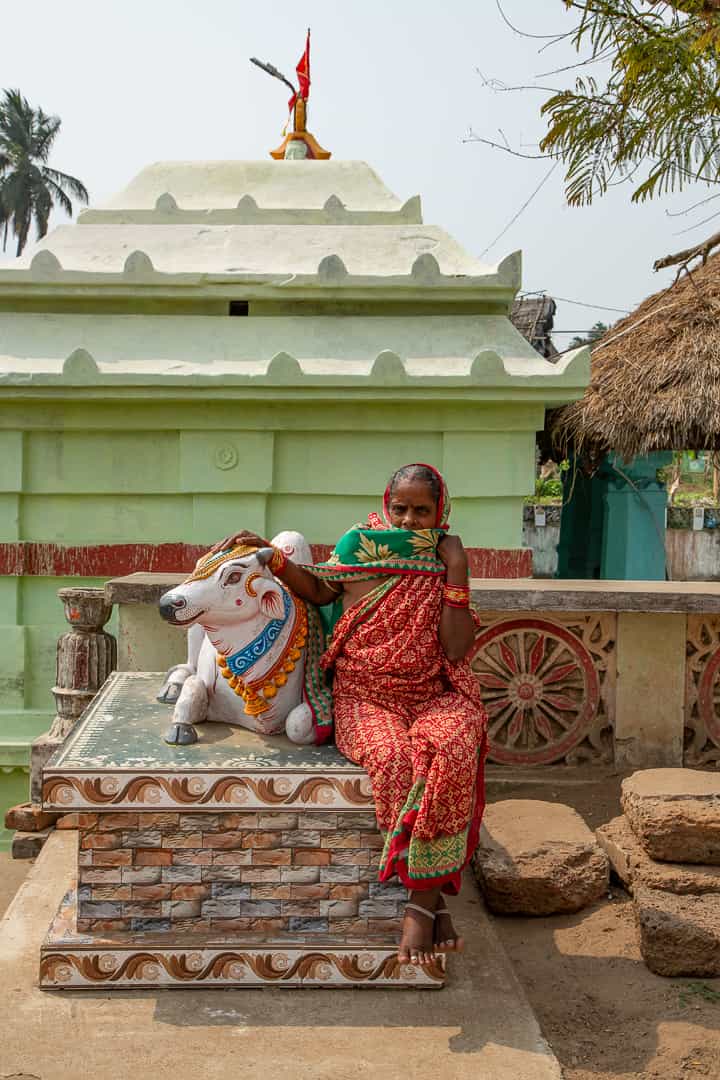
Shoba Jolly, Pattachitra Villages, Archival Print on Paper, 18×12 Inches
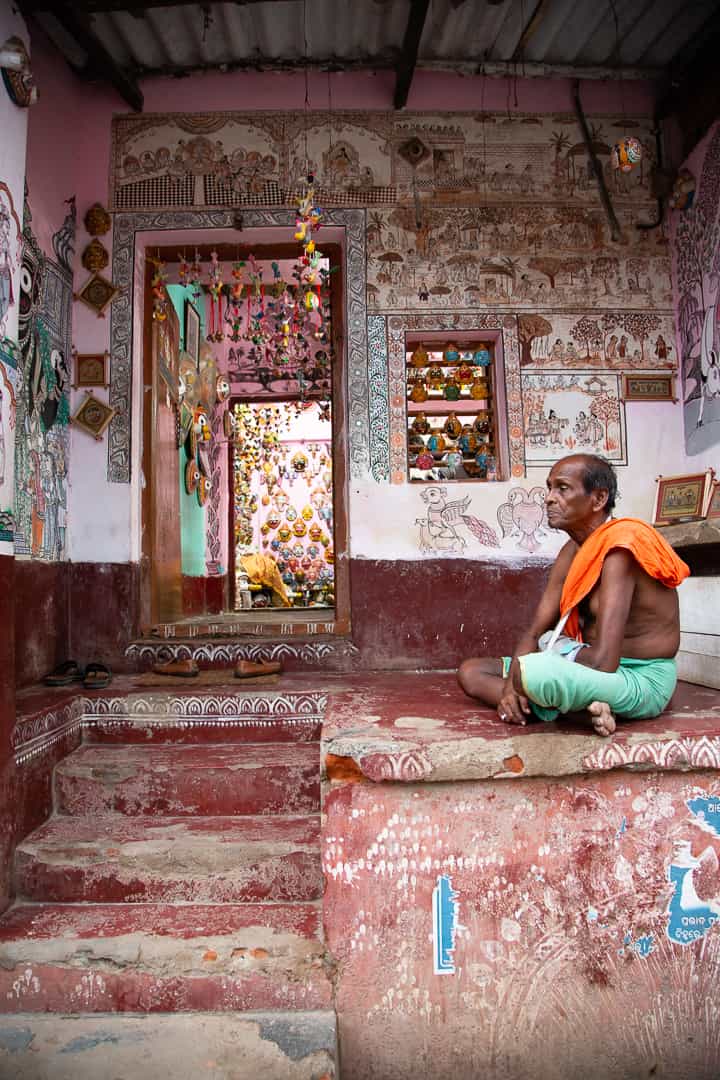
Shoba Jolly, Pattachitra Villages, Archival Print on Paper, 18×12 Inches
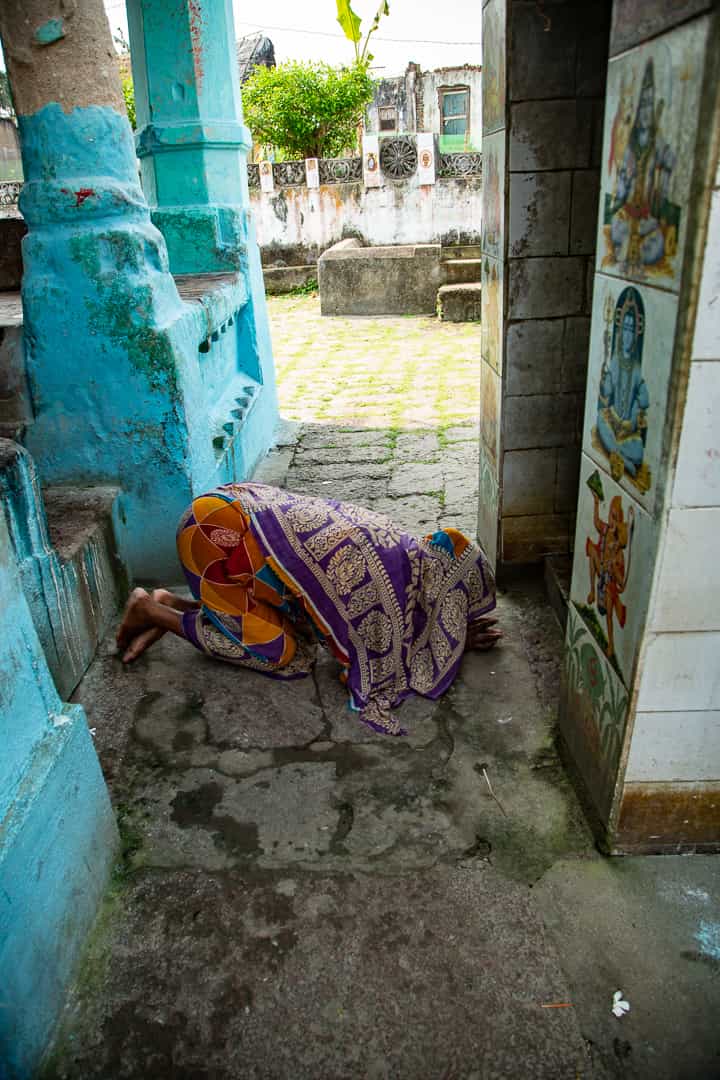
Shoba Jolly, Pattachitra Villages, Archival Print on Paper, 12×18 Inches
